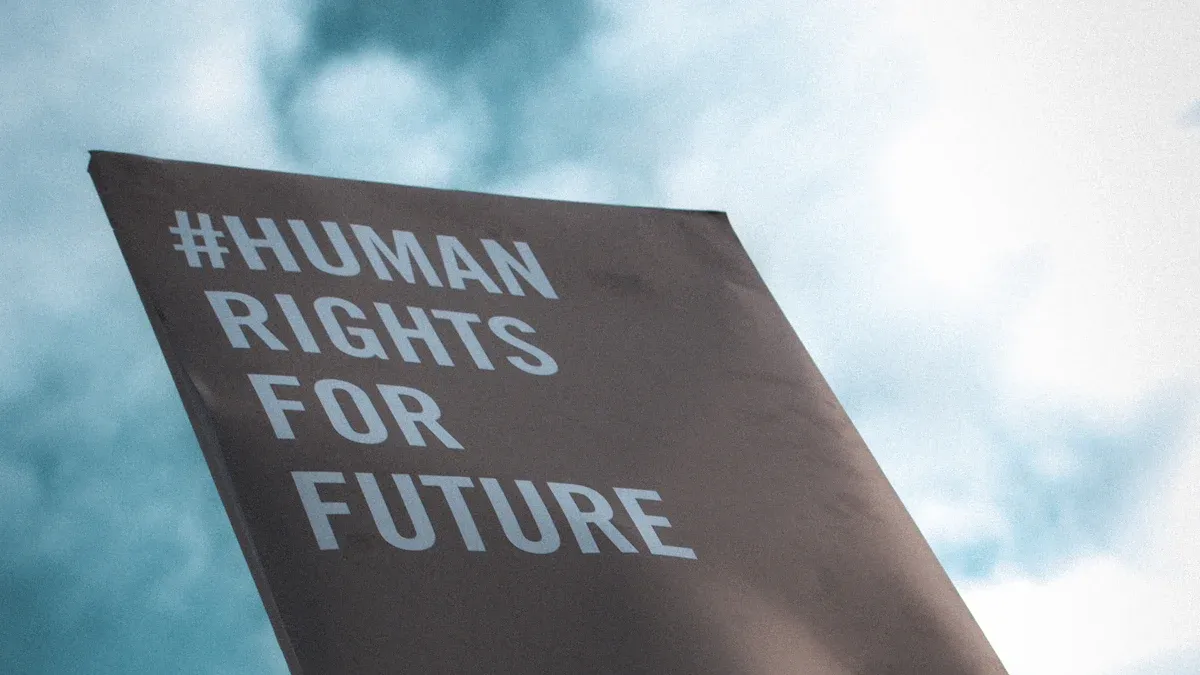How to Effectively Personalize the Candidate Experience in 2025

Personalization in Candidate Experience has become a game-changer in recruitment. Candidates today expect more than generic job postings or templated emails. They want tailored interactions that make them feel valued. Did you know 70% of job seekers say personalized communication shapes their view of an employer? That’s huge!
Technology is also transforming how you connect with candidates. AI tools now help recruiters craft tailored job recommendations, which can boost application rates by 67%. This shift isn’t just about convenience—it’s about creating meaningful connections. When you prioritize personalization, you’re not just filling roles; you’re building trust and loyalty from day one.
Key Takeaways
Personalization is very important in hiring. Candidates want experiences that feel special and show they matter.
Use data to make detailed profiles of candidates. This helps match them with jobs that fit their skills and goals.
Good communication is important. Sending personal emails and giving quick updates builds trust and keeps candidates interested.
Use technology smartly. AI tools can make hiring faster but still keep it friendly and personal.
Be flexible during applications and interviews. Meeting candidates' needs makes the process fair and improves their experience.
Understanding Personalization in Candidate Experience

What Personalization Means in Recruitment
Personalization in recruitment is all about making candidates feel seen and valued. It’s not just about sending a job offer; it’s about creating an experience that resonates with their individual preferences. Imagine receiving a job description that aligns perfectly with your skills and career goals. That’s the power of personalization.
You can achieve this by understanding what candidates want and tailoring your recruitment process to meet those needs. For example, using data-driven decision-making, you can match candidates with roles that fit their aspirations. This approach not only improves the candidate experience but also strengthens your employer brand.
Key Components of a Positive Candidate Experience
A positive candidate experience doesn’t happen by chance. It requires thoughtful planning and execution. Here are the key elements that define personalization in recruitment:
Key Element | Description |
|---|---|
Understanding Candidate Personas | Creating detailed profiles to anticipate preferences and deliver customized experiences. |
Customized Job Descriptions | Tailoring job postings to resonate with candidates and reflect company culture. |
Streamlined Communication Channels | Utilizing personalized communication tools to keep candidates engaged throughout the process. |
Interviewing for the Individual | Adapting the interview process to fit individual backgrounds and preferences. |
When you focus on these elements, you create a recruitment process that feels personal and inclusive. This approach also promotes inclusivity and diversity by addressing the unique needs of every candidate.
Real-World Examples of Personalization
Let’s look at how companies are using personalization to enhance the candidate experience:
Personalizing emails and messages to stand out in a crowded inbox.
Creating candidate personas to understand individual preferences and tailor outreach.
Using segment-specific strategies to engage different types of candidates effectively.
Crafting recruitment content that aligns with candidates’ career goals and pain points.
Leveraging data-driven decision-making to match candidates with the right opportunities.
These strategies show how personalization can make candidates feel valued and improve engagement. When you tailor your approach, you’re not just recruiting—you’re building relationships.
Why Personalization Matters in 2025
Meeting the Expectations of Modern Candidates
In 2025, candidates expect more than just a job offer—they want an experience that feels personal and meaningful. You’re not just hiring someone; you’re building a relationship. Personalization in candidate experience shows candidates that you value them as individuals. This approach can make a huge difference in how they perceive your company.
According to a LinkedIn survey, 83% of talent leaders believe a strong candidate experience directly impacts a company’s reputation. That’s why personalization is no longer optional—it’s essential. By tailoring your recruitment process to individual preferences, you create a positive candidate experience that resonates. Here’s how personalization helps:
It attracts top talent by making your company stand out.
It improves engagement by showing candidates they matter.
It strengthens your employer brand, making you more appealing.
When you focus on personalization, you’re not just filling roles. You’re creating a lasting impression that candidates will remember.
The Role of Technology in Personalization
Technology has revolutionized how you can personalize the recruitment process. Tools like AI and machine learning make it easier to deliver tailored experiences at scale. For example, AI can analyze data to recommend jobs that align with a candidate’s skills and goals. This level of personalization keeps candidates engaged and simplifies their journey.
Here’s how technology supports personalization:
Applicant Tracking Systems (ATS) offer personalized communication features.
CRM tools help manage relationships with effective segmentation.
Data analytics tools provide insights to refine your strategies.
Did you know 68% of recruiting professionals say investing in new technologies improves performance? By leveraging these tools, you can streamline your recruitment process and deliver a seamless, personalized experience.
Gaining a Competitive Edge Through Personalization
In a competitive job market, personalization gives you an edge. Candidates who feel valued are more likely to choose your company over others. In fact, 78% of candidates say an exceptional recruitment experience influences their decision to accept a job offer. Personalized messages also boost response rates by 88%.
Companies like Unilever and Starbucks have embraced personalization to align their recruitment strategies with their values. This approach not only attracts top talent but also enhances their employer branding. When you prioritize personalization, you’re not just meeting expectations—you’re exceeding them.
Actionable Strategies for Personalization in Candidate Experience
Leveraging Data for Tailored Interactions
Using Candidate Data to Personalize Job Matches
Data is your secret weapon for creating a positive candidate experience. By analyzing candidate profiles, you can match individuals with roles that align with their skills and career goals. This approach not only saves time but also makes candidates feel valued.
Here’s how you can leverage data effectively:
Develop detailed candidate personas to guide your personalization efforts.
Use data analytics to refine your recruitment process and improve decision-making.
Automate engagement processes to scale personalized interactions.
Continuously gather feedback and analyze results to make iterative improvements.
When you use data-driven decision-making, you’re not just filling positions—you’re building meaningful connections.
Gathering and Acting on Candidate Feedback
Feedback is a goldmine for improving your recruitment process. Ask candidates about their experience and use their insights to make adjustments. For example, if candidates mention unclear job descriptions, you can refine them to better reflect individual preferences. Acting on feedback shows candidates that you care about their journey, which strengthens trust and loyalty.
Enhancing Communication with Personalization
Customizing Email and Messaging
Generic emails don’t cut it anymore. Candidates want communication that feels personal. Companies like Unilever and Starbucks have nailed this by using data-driven methods to craft unique messages. Personalized emails demonstrate that you value candidates as individuals, which improves engagement and boosts your employer brand.
Providing Transparent and Timely Updates
Effective communication is key to a positive candidate experience. Keep candidates informed at every stage of the recruitment process. Share updates about their application status and provide clear timelines. Transparency builds trust and ensures candidates feel respected throughout their journey.
Tip: Did you know 78% of candidates say an exceptional recruitment experience influences their decision to accept a job offer? Timely updates can make all the difference.
Utilizing Technology for a Seamless Experience
AI-Powered Tools for Personalization
AI tools are game-changers for personalization. They help you streamline the recruitment process while delivering tailored experiences. Here are some top tools to consider:
Manatal: Automates sourcing and engagement to enhance the candidate experience.
Fetcher: Delivers curated batches of candidates through AI-powered sourcing.
Textio: Uses NLP to improve job descriptions and attract diverse talent.
Mya Systems: Provides personalized communication through AI-driven platforms.
Beamery: Personalizes candidate journeys to boost engagement.
These tools simplify your workflow and ensure candidates feel valued.
Balancing Automation with Human Interaction
While technology is essential, don’t forget the human touch. Automation can handle repetitive tasks, but personal interactions leave a lasting impression. For example, use chatbots for initial engagement but follow up with personalized calls or emails. This balance ensures inclusivity and diversity while maintaining a human connection.
Simplifying and Personalizing the Application Process
Streamlining the Application Journey
A smooth application process can make or break a positive candidate experience. If the process feels clunky or overwhelming, candidates might lose interest. You can simplify things by focusing on accessibility and efficiency. For example, optimizing your application process for mobile users ensures that candidates can apply anytime, anywhere. This small change can make a big difference in how candidates perceive your recruitment process.
Another way to streamline is by minimizing form fields. Stick to the essentials—like a resume and cover letter—so candidates don’t feel burdened by unnecessary steps. This approach not only saves time but also adds a personal touch. It shows that you respect their time and value their effort. Additionally, offering alternative calls to action, such as “Quick Apply” buttons, can make the initial engagement feel effortless.
When you simplify the journey, you’re tailoring the recruitment journey to individual preferences. This creates a more personalized recruitment journey and leaves candidates with a lasting impression.
Offering Flexible and Candidate-Centric Interview Options
Interviews are a critical part of the recruitment process, but they don’t have to be rigid. Offering flexible options can enhance inclusivity and diversity while respecting candidates’ unique needs. For instance, you could provide virtual interview options for those who can’t attend in person. This flexibility ensures that no one feels excluded due to logistical challenges.
You can also let candidates choose interview times that work best for them. This small adjustment shows that you’re willing to accommodate their schedules, which builds trust and fosters a positive candidate experience. Additionally, consider tailoring interview formats to align with individual preferences. For example, some candidates might thrive in a conversational setting, while others may prefer structured questions.
By focusing on flexibility and personalization, you’re not just conducting interviews—you’re creating an environment where candidates feel valued. This approach helps in retaining top talent and sets the stage for long-term success.
The Impact of Personalization on Recruitment Outcomes

Strengthening Employer Branding Through Personalization
Personalization in candidate experience plays a huge role in shaping how candidates perceive your company. When you create tailored interactions, candidates feel valued and understood. This connection strengthens your employer brand and makes your company more appealing. Think of it like a personalized shopping experience—when a store caters to your preferences, you’re more likely to return and recommend it to others. The same principle applies to recruitment.
Did you know 60% of job seekers share positive experiences with others? This kind of word-of-mouth can boost your brand visibility. Additionally, 78% of candidates say an exceptional recruitment process influences their decision to accept a job offer. By focusing on personalization, you’re not just filling roles—you’re building a reputation that attracts top talent.
Boosting Candidate Satisfaction with Tailored Experiences
A positive candidate experience hinges on how well you tailor the recruitment process to individual preferences. When candidates feel like the process is designed with them in mind, their satisfaction skyrockets. Companies like Facebook and Unilever have seen this firsthand. Facebook revamped its recruitment process and achieved a 40% increase in candidate engagement. Similarly, Unilever boosted applicant satisfaction by 16% through personalized approaches.
Here’s a quick look at how personalization impacts satisfaction:
Evidence Type | Detail |
|---|---|
Candidate Engagement Increase | 40% increase in engagement after Facebook revamped its recruitment process. |
Turnover Reduction | Personalized recruiting reduces turnover by up to 25%. |
Applicant Satisfaction | Unilever saw a 16% increase in satisfaction by tailoring experiences. |
Positive Response Rate | Personalized messages boost engagement by 88%. |
Job Offer Acceptance Rate | Tailored outreach increases acceptance rates by 40%. |
These numbers show how personalization transforms the candidate experience into something memorable and meaningful.
Improving Retention Rates by Building Trust Early
Building trust starts from the very first interaction. When you personalize communication and maintain frequent contact, candidates feel more confident about joining your company. This trust doesn’t just help you hire—it helps you keep employees long-term. In fact, 78% of individuals are more likely to stay with a company that communicates personally and frequently.
Frequent, personalized communication also encourages referrals. Around 81% of people are willing to recommend a company that values them as individuals. By focusing on personalization early in the recruitment process, you’re not just retaining top talent—you’re creating advocates for your brand.
Overcoming Challenges in Personalizing the Candidate Experience
Balancing Technology and Human Touch
Technology can make the recruitment process faster and more efficient, but relying too much on it can backfire. You might lose the personal connection that candidates value. Here are some challenges you should watch out for:
Dehumanizing the process: Overusing technology can make interactions feel robotic, leaving candidates feeling undervalued.
Algorithmic bias: AI tools might unintentionally favor certain groups, which can harm fairness in hiring.
Maintaining human connection: Technology often reduces opportunities for genuine conversations, which are key to building trust.
To strike the right balance, use technology for repetitive tasks like scheduling or initial screening. Then, focus on personal interactions during interviews or follow-ups. This way, you can keep the process efficient while still making candidates feel valued.
Ensuring Privacy and Data Security
Personalization often involves collecting sensitive candidate data, so protecting it is crucial. You don’t want candidates to worry about their information being misused. Here’s how you can ensure privacy and security:
Implement strong access controls: Limit data access to only those who need it.
Encrypt data: Protect sensitive information both during transmission and storage.
Train employees: Regularly educate your team on data privacy best practices.
Monitor user activity: Use logging tools to track and prevent unauthorized access.
Secure online applications: Keep your platforms updated and secure from vulnerabilities.
By taking these steps, you show candidates that their data is safe, which builds trust and strengthens your employer brand.
Addressing Budget and Resource Limitations
Personalization doesn’t have to break the bank. You can still create a great candidate experience even with limited resources. Start by prioritizing efforts that have the biggest impact. For example, focus on hyper-personalization strategies that are scalable, like using AI tools to match candidates with roles.
You can also explore cost-effective tools that don’t compromise quality. Many platforms offer affordable solutions for automating parts of the recruitment process. By being strategic, you can deliver a personalized experience without overspending.
Tip: Always evaluate the return on investment for any tool or strategy you adopt. This ensures you’re making the most of your budget.
Personalization in recruitment isn’t just a trend—it’s a necessity in 2025. It shows candidates you value them as individuals, which boosts their perception of your company. Tailored experiences also attract top talent, improve engagement, and strengthen your employer brand.
Here’s why personalization matters:
Candidates expect personalized communication and job postings.
Poor experiences can lead to drop-offs and harm your reputation.
Proactive, tailored outreach helps you connect with high-quality candidates.
The benefits are clear. Personalized interactions can increase candidate engagement by 40% and boost application rates by 67%. Companies with personalized onboarding even see 30% higher retention after a year.
By prioritizing personalization, you’re not just hiring—you’re building lasting relationships. Start today and make every candidate feel like they belong.
FAQ
What is the first step to personalizing the candidate experience?
Start by understanding your candidates. Use data to create detailed personas that reflect their skills, goals, and preferences. This helps you tailor job recommendations, communication, and the overall recruitment process to meet their expectations. Personalization begins with knowing who you're engaging with.
How can small businesses personalize the candidate experience on a budget?
Focus on scalable strategies. Use affordable tools like email automation for personalized communication. Simplify your application process and offer flexible interview options. Even small gestures, like addressing candidates by name in emails, can make a big impact without stretching your budget.
How does personalization improve diversity and inclusion in hiring?
Personalization allows you to adapt your process to individual needs. For example, offering flexible interview formats or tailoring communication can make your process more inclusive. It ensures every candidate feels valued, regardless of their background, and helps you attract diverse talent.
What role does AI play in personalizing recruitment?
AI simplifies personalization by analyzing data and automating tasks. It can recommend jobs that match a candidate’s skills, craft tailored messages, and even predict candidate preferences. This makes the process faster and more accurate while still feeling personal.
How do you balance automation with human interaction?
Use automation for repetitive tasks like scheduling or initial outreach. Then, focus on personal interactions during interviews or follow-ups. For example, a chatbot can answer basic questions, but a recruiter should handle deeper conversations. This balance keeps the process efficient and human.
See Also
Essential Strategies for Effortless Interviews Using AI Tools
Ten Effective Strategies to Enhance Your Hiring Process
Tailoring Your ATS: Crucial Insights for Business Growth
Enhancing Recruitment Efficiency with MokaHR’s Applicant Software
From recruiting candidates to onboarding new team members, MokaHR gives your company everything you need to be great at hiring.
Subscribe for more information

